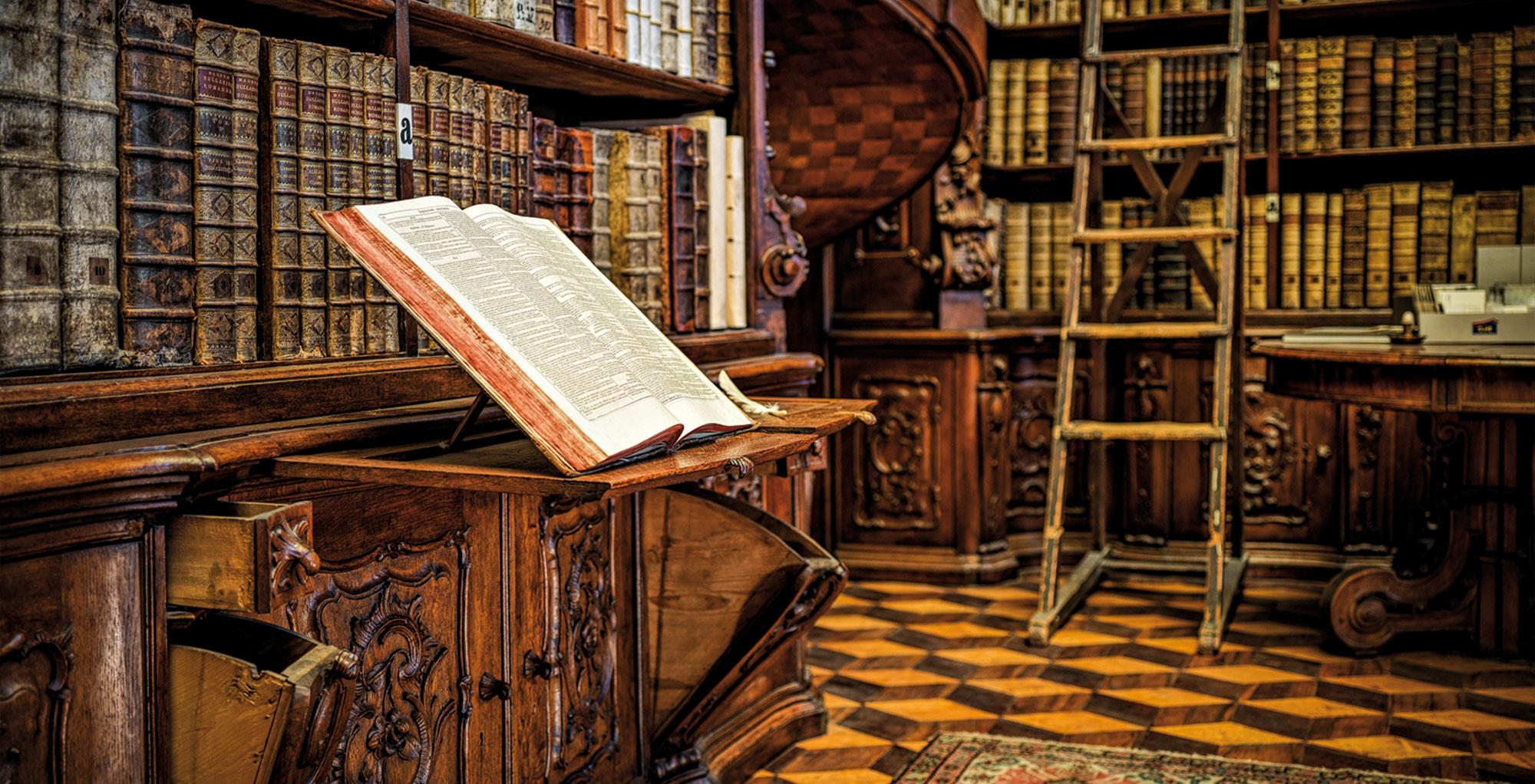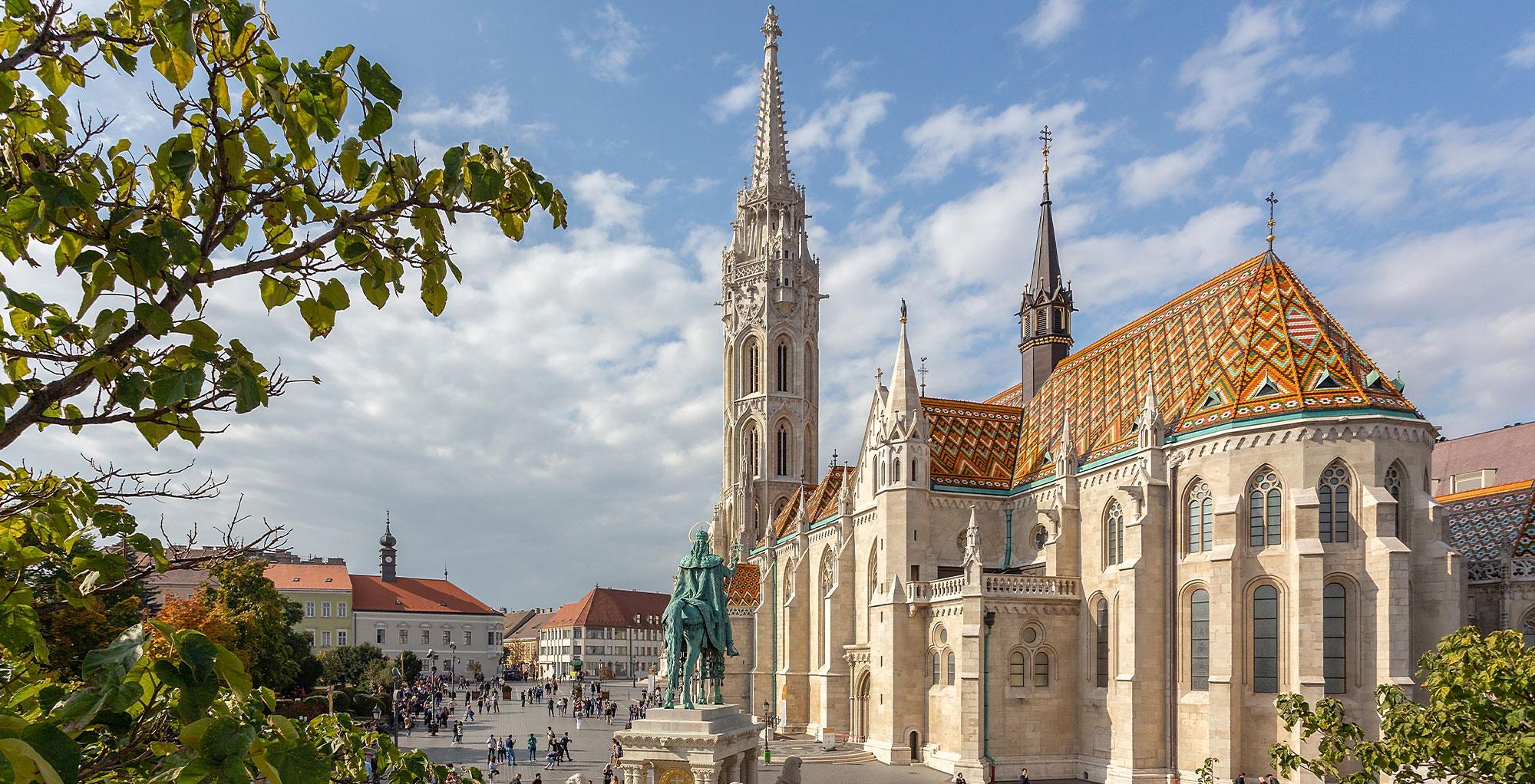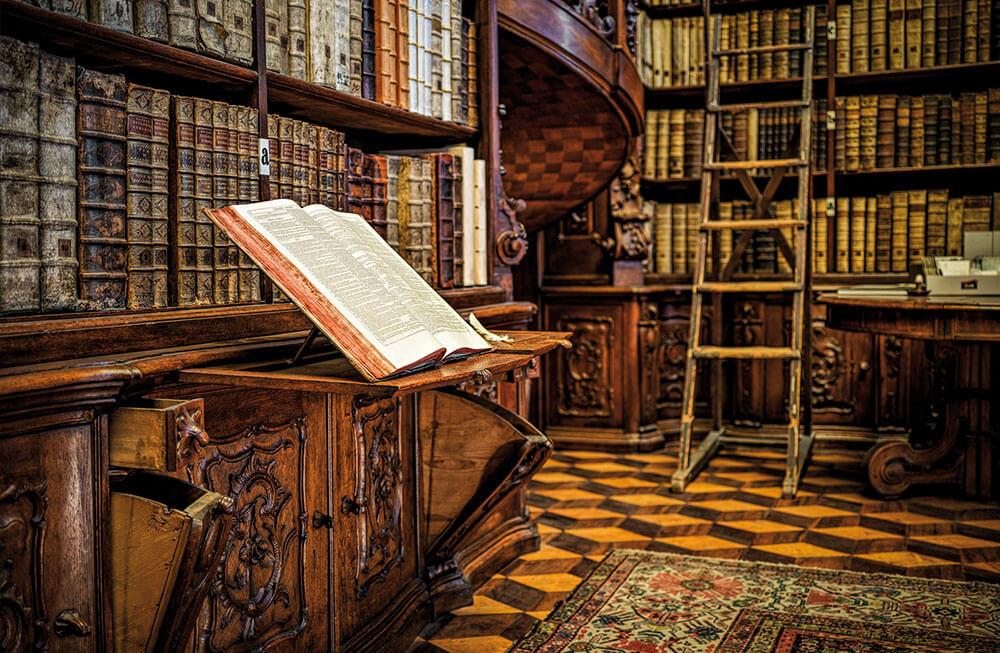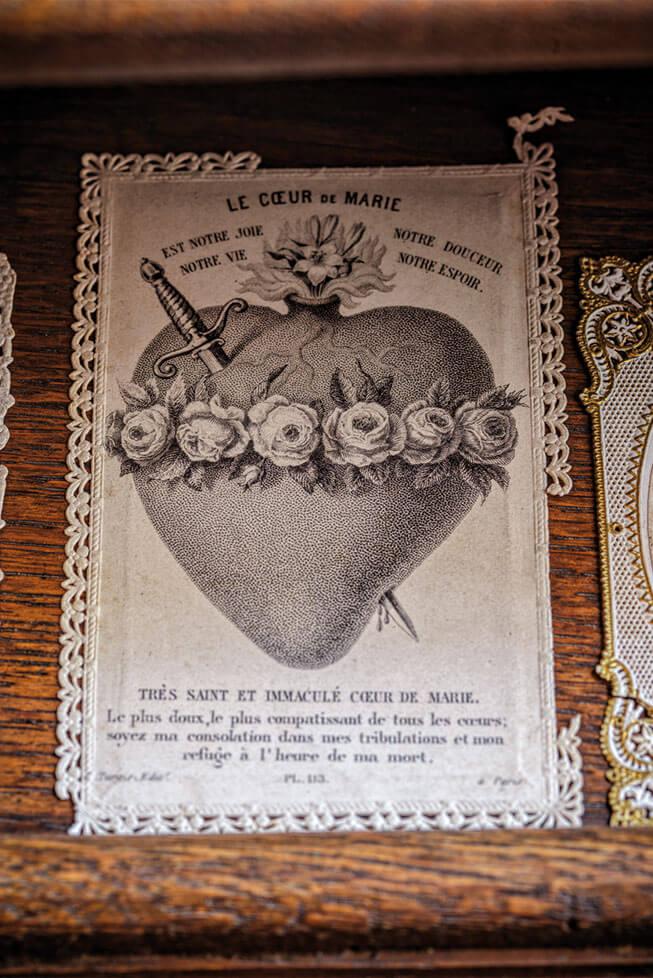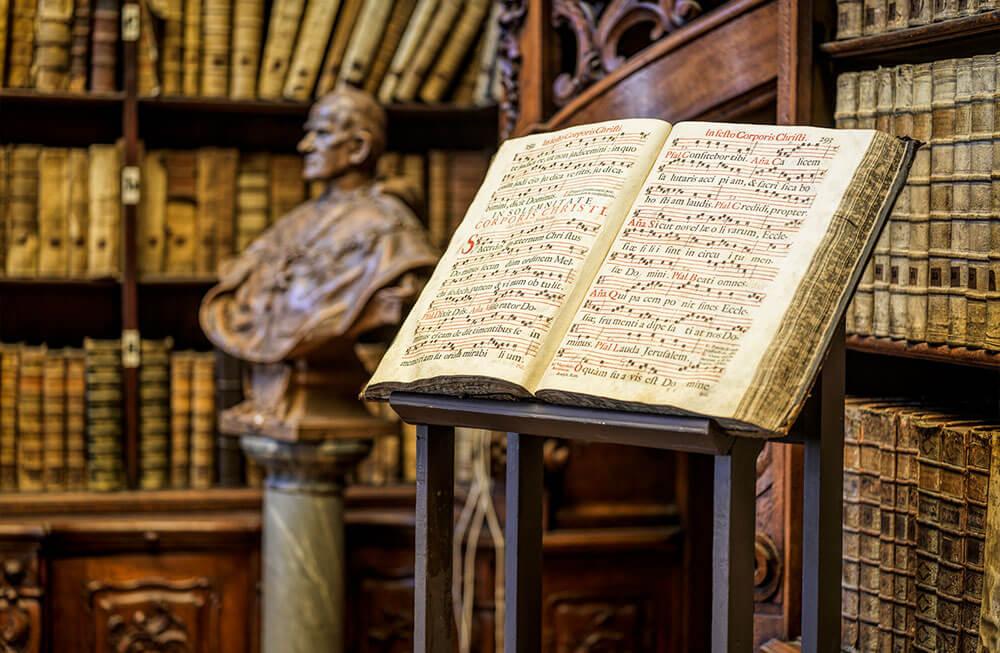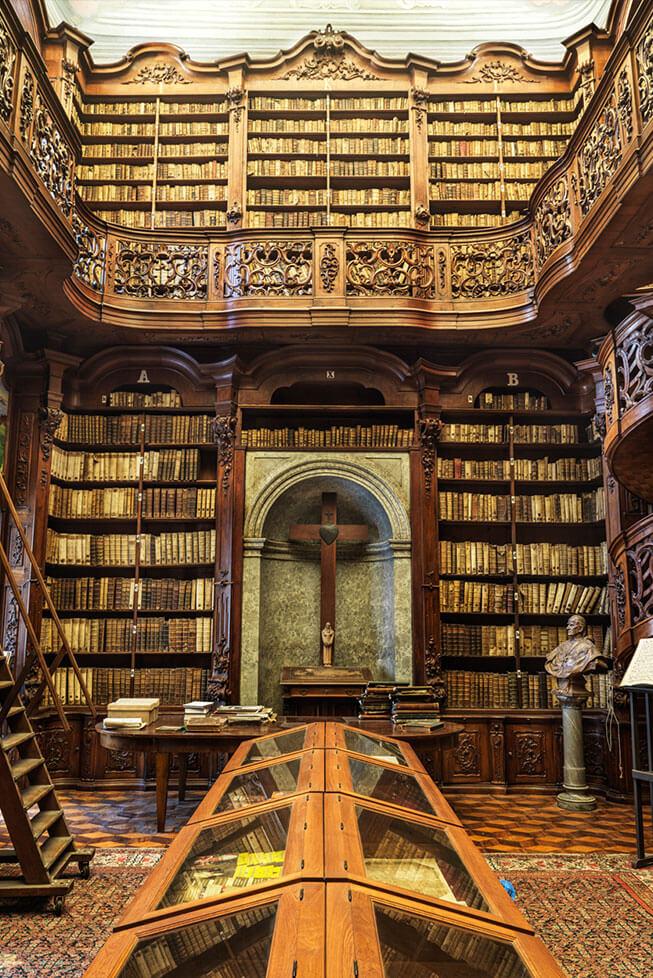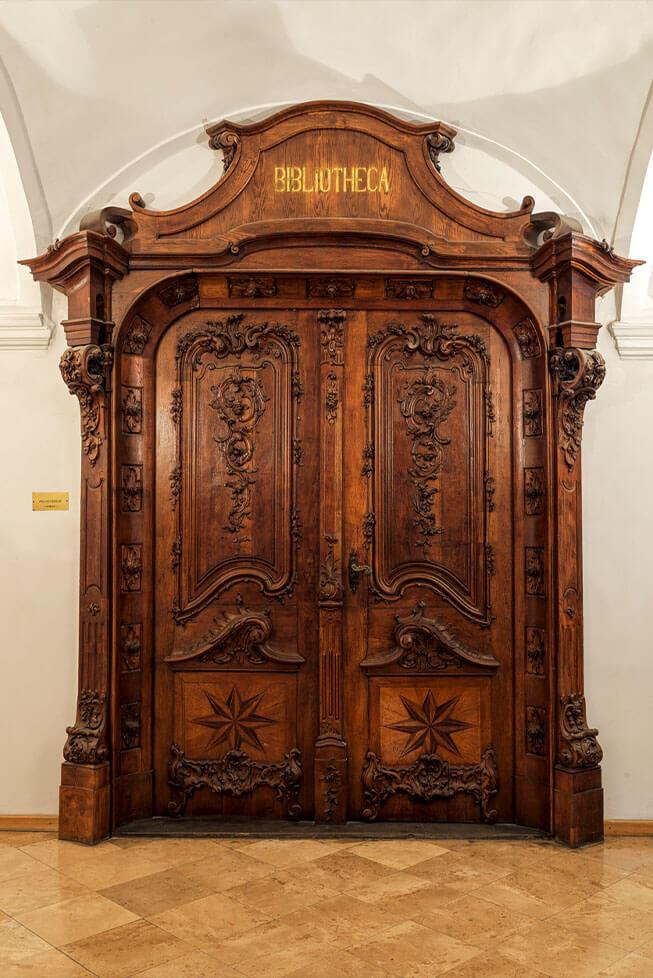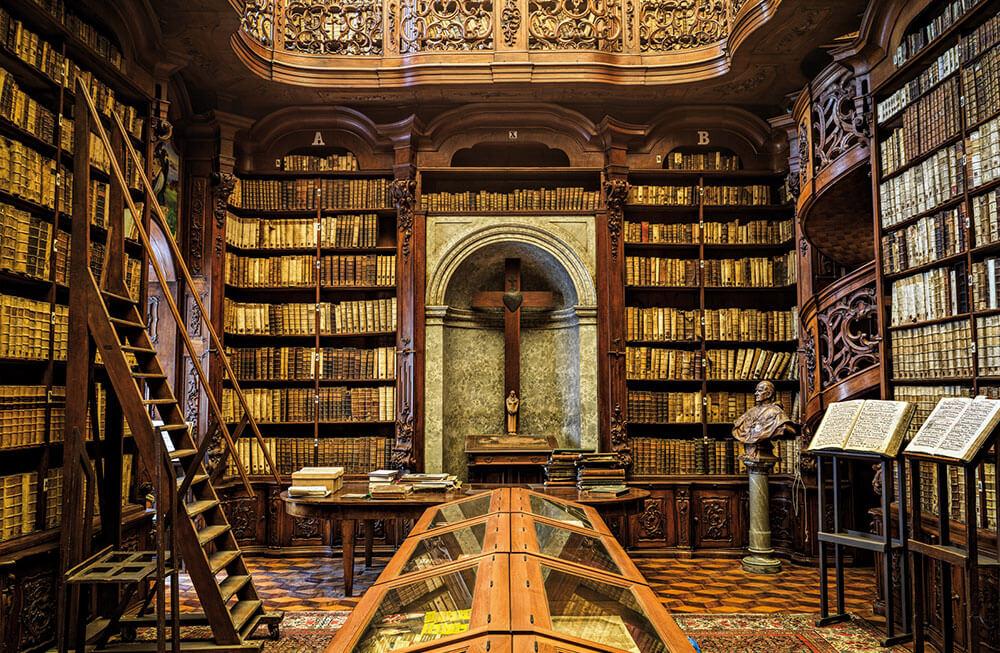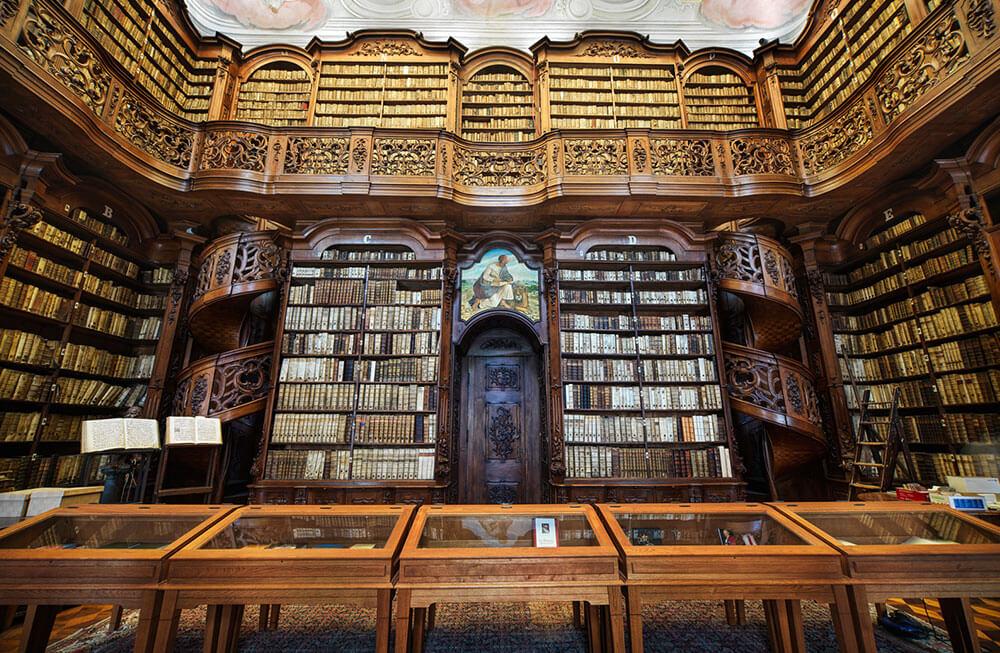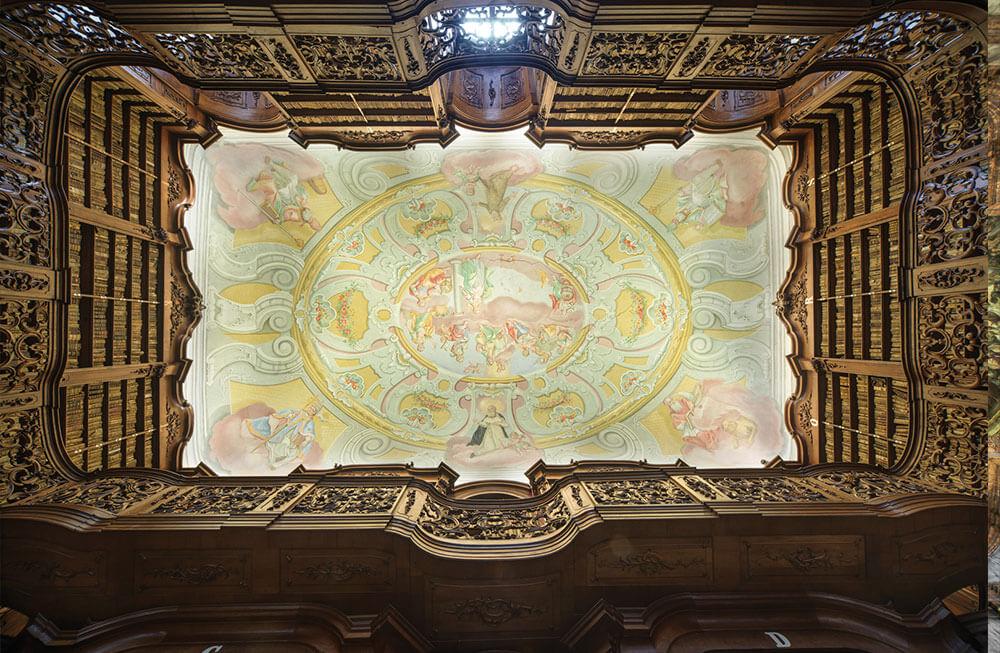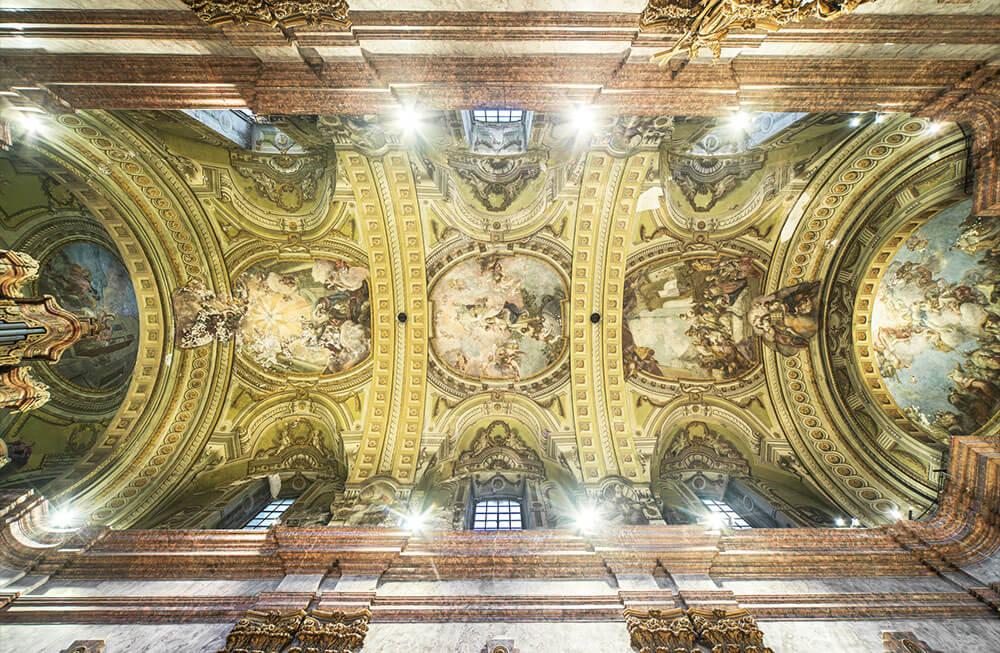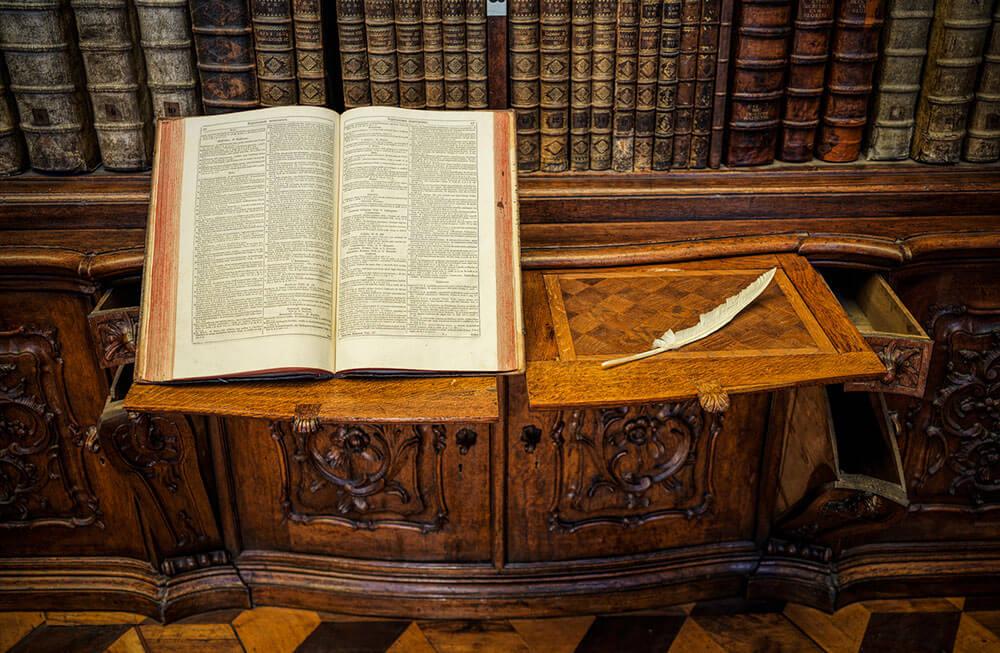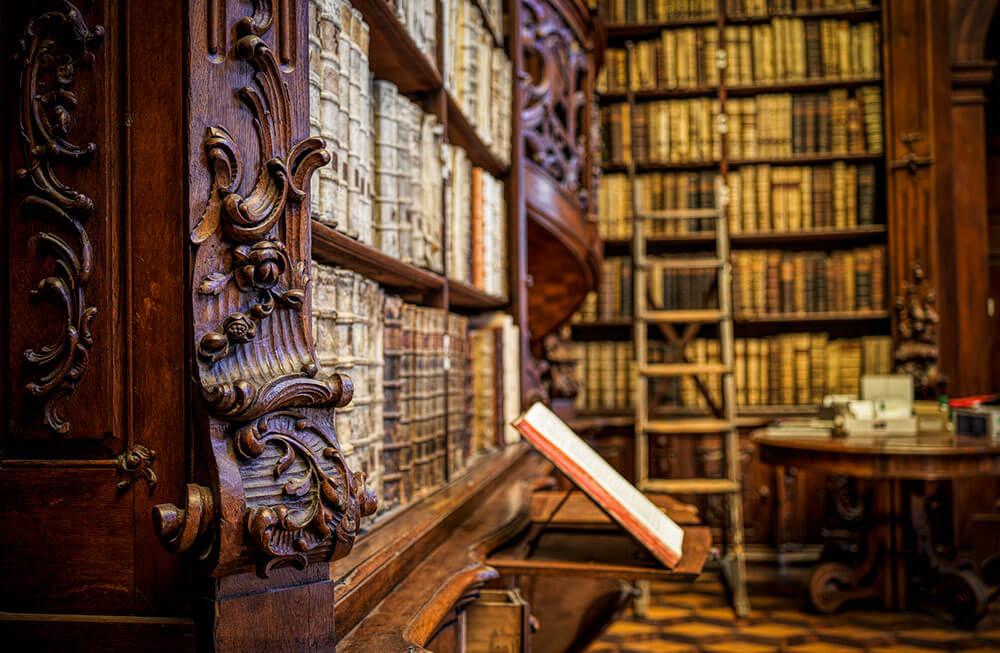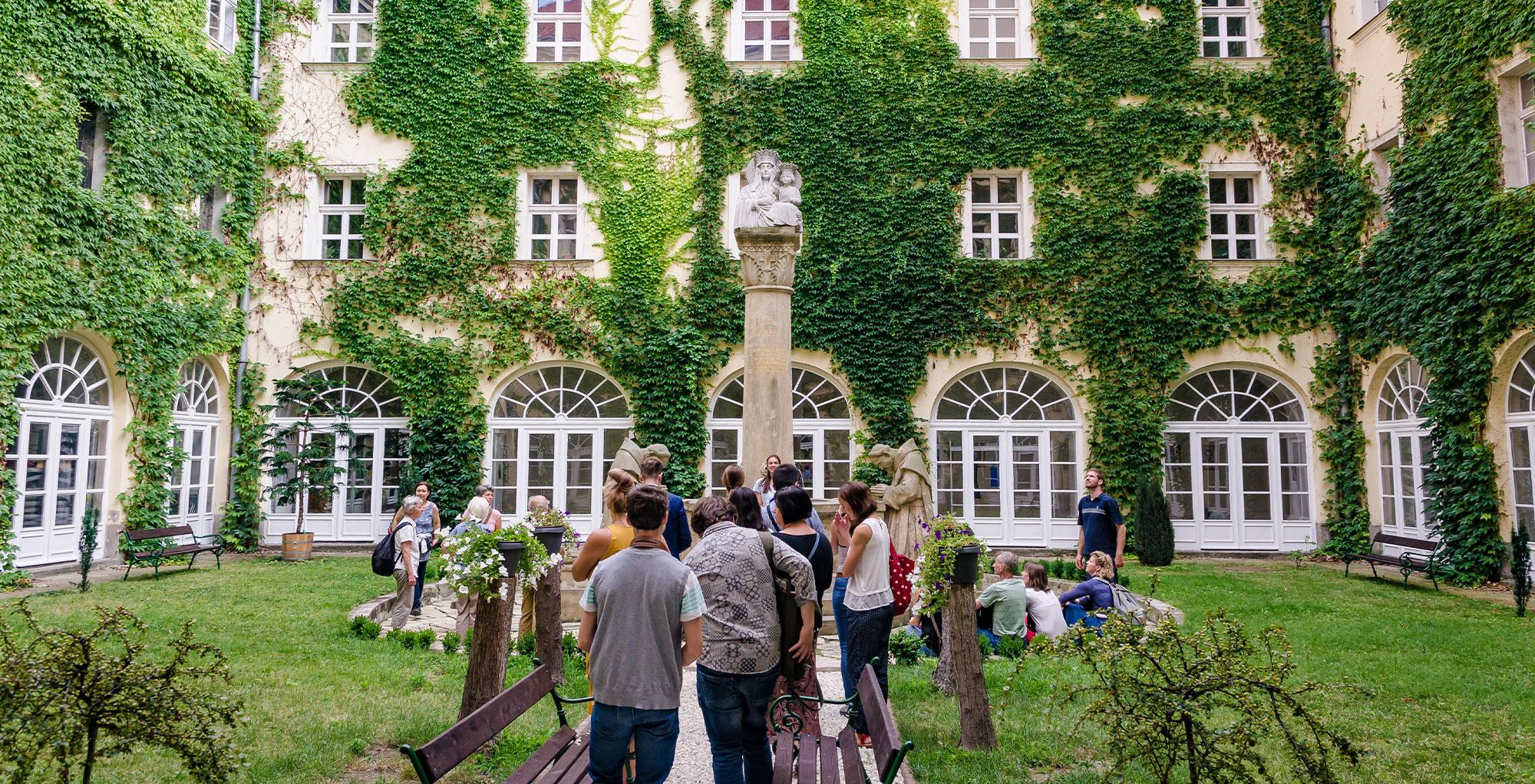The library housed in the building of the Central Seminary was originally stocked with books by the Pauline monks in the early 1770s. Although its collection has been depleted several times in recent centuries, its beautifully carved, polished furnishings and vast ceiling frescoes still make it one of the most stunning Baroque library halls.
The hall rises two storeys high, lined with bookshelves from floor to ceiling, with spiral staircases in the inner corners leading up to the gallery that runs around the upper level. The furnishings were designed by Antal Rutschmann, a Pauline monk of Bavarian origin, and crafted by a small group of fellow Pauline brothers. A unique feature of the oak furniture, treated with beeswax, is the hidden writing desks, complete with inkwell and pen holders, built discreetly beneath the shelves.
A vast ceiling fresco, preserved in its original condition, depicts allegorical female figures known as the handmaidens of theology, each representing a different branch of knowledge—from philosophy and medicine to poetry. From the four corners of the vault, the four great Fathers of the Western Church gaze down upon the readers: Saint Jerome (with a lion), Saint Ambrose (with a beehive), Saint Augustine (with a flaming heart) and Saint Gregory the Great (with the dove of the Holy Spirit). The depictions were presumably created by Johann Bergl, who also painted the ceiling of the adjacent Church of St. Mary the Virgin.
It is a miracle that the library has survived the storms of history. Its collection was filled by the Paulines around 1770 with books rescued and preserved from the Ottoman occupation. However, by royal decree of King Joseph II, the most valuable part of the collection—containing codices and maps—was taken away, leaving only works on theological subjects in the hall.
But when King Francis I founded the Central Seminary in 1805, which still operates here today, he permitted the shelves of the former Pauline Library to be restocked with duplicate volumes from the monastic libraries collected for the University Library. From that time on, the seminarians used the collection for their studies.
Today, the library holds 8,000 volumes comprising a total of 16,000 works. The collection is predominantly in Latin, with most of the works dating from the 16th to the 18th centuries. The Protestant collection is mostly in Slovak and German. Beyond its impressive interior, the true value of the library lies in the fact that it preserves 15 volumes dating from before the 1500s.
Did you know?
The National Museum and Library was opened here in 1803, with the first library hall of the present National Széchenyi Library, and the first home of the Hungarian National Museum.

